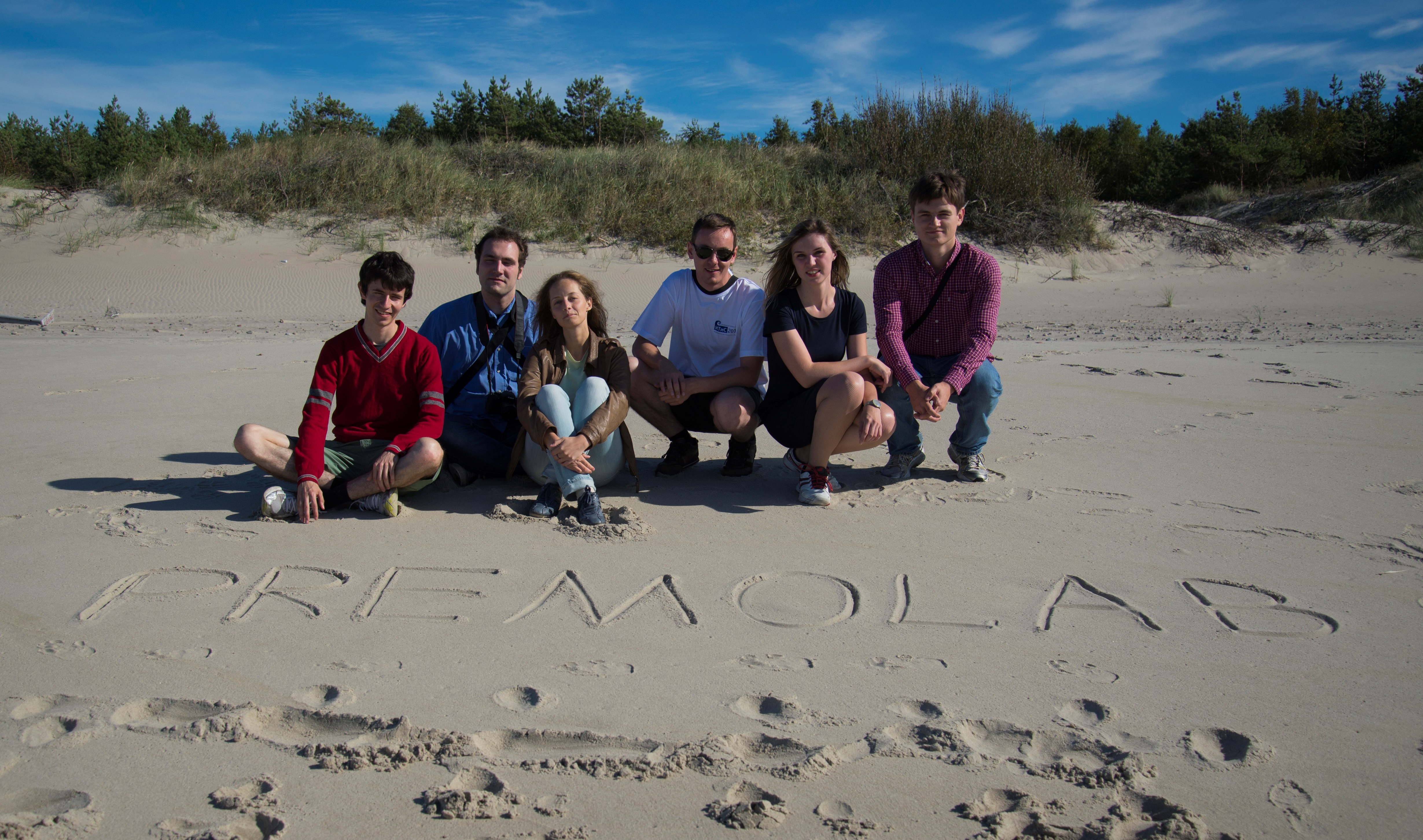Мини-конференция молодых ученых
Лаборатории структурных методов анализа данных в предсказательном моделировании (ПреМоЛаб)

21 февраля (пятница), аудитория 615 ИППИ РАН
10:00 – 10:35
Parametric confidence sets using multiplier bootstrap
Майя Жилова
In the talk it will be presented a new approach for finding a size of the likelihood-based confidence sets with multiplier bootstrap. The procedure is attractive due to its clear interpretation and computational simplicity.
The theoretical justification of the method is based on the results by Spokoiny (2012), which are stated for the case of finite samples and allow for model misspecification.
10:35 – 11:10
Conditional moment restrictions estimation
Никита Животовский
We are interested in statistical models where parameters are identified by a set of conditional
estimating equations (or moment restrictions). Using modern tools proposed by Spokoiny (2011) we will reconsider the properties of the estimator in generalized method of moments and derive Wilks expansion for this model.
All the results are non-asymptotic and stated for a deterministic design.
11:10 – 11:40
Кофе-брейк
11:40 – 12:15
Bernstein - von Mises theorem in high dimensional Bayesian estimation
Максим Панов
Classical asymptotic Bernstein-von Mises theorem will be reconsidered in non-asymptotic setup.
Special attention will be paid to applicability of the results in case of growing parameter dimension and to the notion of effective dimension. General results will be accompanied by particular examples illustrating the theory.
12:15 – 12:50
Bayesian model selection and the concentration of the posterior of hyperparameters
Николай Балдин
We will discuss a construction of a hyperprior that can be used for Bayesian model selection. This construction is inspired by the idea of the unbiased model selection in penalized maximum likelihood approach. The main result shows a one-sided contraction of the posterior: the posterior mass is allocated on the models of lower complexity than the oracle one.
12:50 – 14:20
обед
14:20 – 14:55
Аппроксимация гладких функций с помощью тензорного произведения сплайнов
Михаил Беляев
Рассматривается задача построения аппроксимации гладкой функции нескольких переменных по зашумленным значениям на многомерной решетке. Решение строится с помощью тензорного произведения сплайнов как минимимум функции ошибки, которая включает как невязки, так и взвешенную сумму производных модели. В докладе будут представлены асимптотическая оценка точности и вычислительно эффективный способ построения аппроксимации.
14:55 – 15:30
Optimal interpolation error for stationary multidimensional stochastic processes
Павел Ерофеев
Many applied engineering problems require construction of reliable meta-models. These models are mathematical expressions based on experimental or computational data, that used for approximation of some physical relationship or process. In turn, the predictive ability and reliability of such models, besides mathematical technique used, highly depend on the experimental design, i.e. tested combinations of physical parameters. There exist two main approaches for design of experiment construction: a) precalculate the full design; and b) start with some fraction of allowed experimental runs and enrich the design adaptively, based on the properties of the acquired data. The latter case requires thorough theoretical investigation.
In this talk we consider stationary stochastic process interpolation behavior. The process is known at points of infinite uniform lattice with varying parameters. New generalized results for optimal interpolation error of multidimensional stationary process will be presented. This results help understand which properties of design space allow for the better interpolation quality.
15:30 – 16:00
Кофе-брейк
16:00 – 16:35
Сhange point detection in flow of binary data
Александра Суворикова
We present a new approach to real-time change point detection. It is based on the idea of multiple testing. The novelty lies in decision making taking in account comparison of confidence intervals instead of estimators. The method does not make any assumptions about a type of changepoint. It was tested on both real and simulated data.
16:35 – 17:10
Saddle-point model selection
Кирилл Ефимов
Within the penalized model selection approach the selected model is defined by minimization of penalized empirical risk. Such procedures enjoy nice algorithmic properties especially if both the empirical risk and the penalty function are convex functions of the parameter. A number of "oracle" risk bounds for such methods are available. However, the choice of penalty is critical and there is no uni fied approach for fixing this penalty. Another method of model selection based on a saddle point optimization (SP model selection) is presented. The basic observation behind the SP method is that the empirical risk minimizer is a saddle point of the bivariate function built as the diff erence between empirical risks of two models. An extension of this idea is to define the model selector via a saddle point of a penalized di fference. The penalty is also a bivariate function and it has to be selected by the condition that the "oracle" model can be rejected against a larger model only with a very small probability.
17:10 – 17:45
Сравнение различных методов скорейшего спуска для квадратичной функции
Александр Гаглоев
Рассматривается задача безусловной минимизации квадратичной функции. В докладе будет рассказано о некоторых методах скорейшего спуска со случайными и градиентным выборами направлений и будет проведено их сравнение.
| 18.02.2014 | |











